The George Dickel brand is best known as the “other” Tennessee Whiskey. Without going into the whole thing here, I’ll summarize by saying Tennessee Whiskey is straight bourbon whiskey (but don’t call it bourbon) that has been filtered through some quantity of sugar-maple charcoal. George Dickel, owned by Diageo, takes the extra step of chilling the whiskey before performing the filtering. This practice, called ‘chill filtration’, is now generally avoided by modern scotch producers who have found that consumers prefer not to have flavor compounds filtered out of their high-end whiskies. Dickel claims the chill-filtration through charcoal “mellows” the whiskey, removing harsh flavors. Maybe. Who knows.
Here, we have something different. This is not actually a bourbon (nor a Tennessee Whiskey like the Dickel No. 12 or the 13-year Bottled in Bond), but rather a MGP-distilled (that would be in Indiana) 95% rye whiskey that has been subjected to the above charcoal chill-filtration process. I am now obliged to point out the bald-faced hypocrisy of a label that trumpets the “…traditions and craftsmanship that make our Tennessee whisky world famous” when the contents of the bottle were in fact distilled in Indiana. Still, this is par for the course in the modern American whiskey industry and nobody should be surprised. Speaking of MGP, that 95% rye mash bill (the other 5% is malted barley for enzymes) can also be found in James E. Pepper 1775 rye, Redemption rye, Rebel Yell Small Batch rye, Bulleit ryes, Angel’s Envy rye, Templeton rye, and the discontinued Smooth Ambler rye, among others.
Still, none of the above producers are chill-filtering that MGP rye through 13 feet of maple charcoal, so we at least owe the bottle a proper amount of consideration. The bottle is 45% ABV and retails for a very respectable $20-ish.
Nose: A little hot, and very spicy. Clove and cardamom pop first, and then a bed of cinnamon, oaky vanilla, pine sap, and apple cider vinegar. A rest in the glass turns the vinegar into fresh apple cider.
Palate: Medium-bodied. Again, somewhat hot, with a cinnamon-flecked burn that slowly mellows into marshmallow, wood polish, orange peel, cherry syrup, and apple compote.
Finish: Medium-long. Tart, with a swath of lemon juice and cherry, which gives way to slightly bitter charcoal that my label-influenced mind is telling me tastes like maple. Fades without further evolution.
With Water: Several drops of water bring out a grassy note, and a bunch of anise (licorice) on both the aroma and the flavor. It doesn’t seem to affect the tongue burn. I don’t think this benefits from water, but it won’t hurt it either.
Overall: There’s nothing particularly unusual about the notes in this rye, but what’s exceptional is that the notes that count are the ones that pop most. The fresh fruit, the tartness, and the not-at-all-stale spices are always in the forefront. A good rest in the glass makes this rye smell exactly like mulled apple cider. Very, very nice for a bottom-shelfer. This compares favorably with my rye standards, Hochstadter’s and Rittenhouse 100. Those two probably have the edge in terms of overall quality for the price, but this particular MGP rye is at least as tasty.
Maybe they’re on to something with that charcoal chill-filtration. If so, that means chill-filtration is GOOD, and my whole life is a lie.




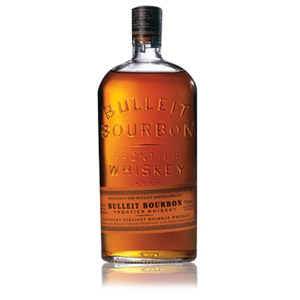
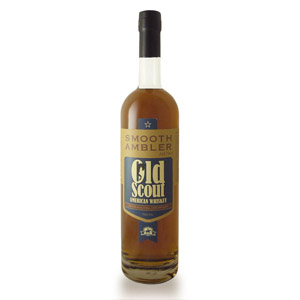
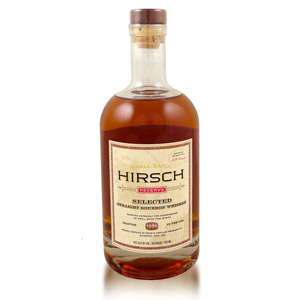
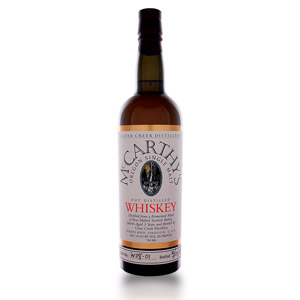
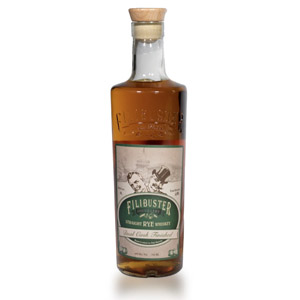
I am surprised you did not mention “dill” in the aroma, for me this is the first thing that popped when I had a bottle of it. I recently visited their distillery in Cascade Hollow when they released their excellent BiB in May and to my surprise, there was not a single bottle of the rye anywhere in their facility (store, tasting room)…
Without having personally smelled this rye (or many others for that matter), I can tell you with 100% certainty that a visit to any old school New York deli will confirm the aromatic similarities that rye and dill share.
[…] The George Dickel brand is best known as the “other” Tennessee Whiskey. Without going into the whole thing here, I’ll summarize by saying Tennessee Whiskey is straight bourbon whiskey (but don’t call it bourbon) that has been filtered through some quantity of sugar-maple charcoal. George Dickel, owned by Diageo, takes the extra step of chilling the whiskey before performing the filtering. This practice, called ‘chill filtration’, is now generally avoided by modern scotch producers who have found that consumers prefer not to have flavor compounds filtered out of their high-end whiskies. Dickel claims the chill-filtration through charcoal “mellows” the whiskey, removing harsh flavors. Maybe. Who knows. It certainly worked out in their rye. […]